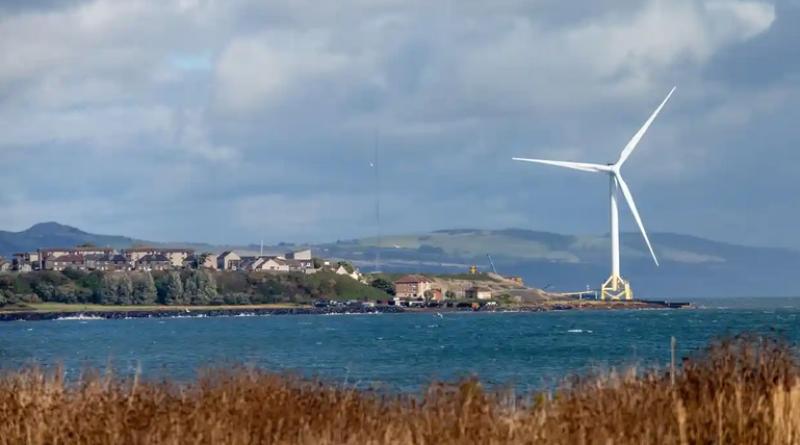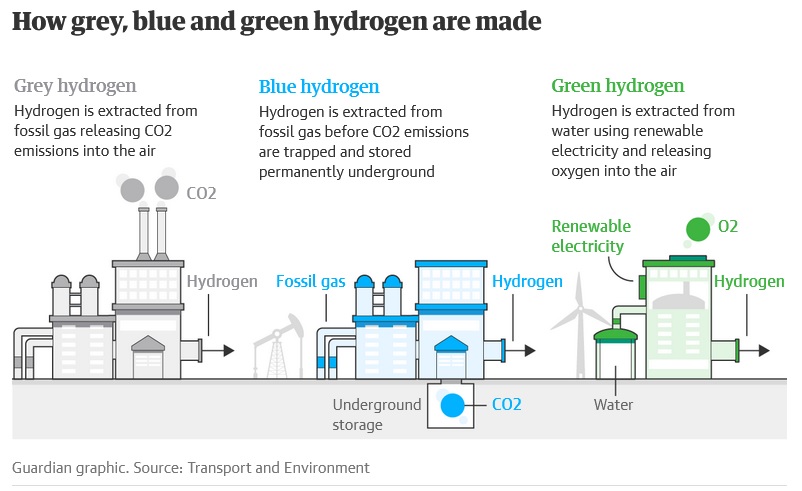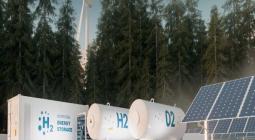‘World-first’ hydrogen project raises questions about its role in fuelling future homes

Project to power 300 Scottish homes with ‘green hydrogen’ hit by delays, leaving some to question whether it is still worthwhile
On the northern shores of the Firth of Forth, royal blue waters lap against the weathered walls of Methil Docks. The quays were once a hub for coal exports but, since the late 1970s, haven’t dealt in the black stuff. Now, the town on Scotland’s east coast is flirting with another era in the energy industry – but it doesn’t appear to be going to plan.
In what has been dubbed a “world-first project”, called H100, about 300 homes in Methil and neighbouring Buckhaven in Levenmouth were planned to be powered by “green hydrogen” gas from next year. Customers are offered free hydrogen-ready boilers and cookers under the scheme, scheduled to last at least four years.

In the £32m project, National Grid will use something other than natural gas in its distribution network for the first time in what is claimed will be the world’s first 100% hydrogen network for consumers. H100 hopes to address the need for alternative energy sources to gas, not least as heating accounts for about 37% of all UK carbon emissions.
However, the project has been hit by delays – including to the construction of a flagship “demonstration facility”. Some now openly question whether it is a worthwhile undertaking and whether hydrogen will play a significant part in fuelling the homes of the future.
Green hydrogen is produced by splitting water using electricity from renewables, with minimal emissions. Under the plans, an existing 7 megawatt, 200-metre-high offshore wind turbine would be used to power an electrolyser on the nearby Fife Energy Park before the hydrogen is stored and transported to homes through a newly laid network of pipes.
Households were due to be connected during 2023 with the project running through to the end of March 2027, in theory saving over 2,650 tonnes of CO2 in the process. It is envisaged a second phase could expand it to 1,000 homes. Six huge tanks will store five tonnes of hydrogen – enough for around five peak days.
The project is run by the gas distributor SGN and funded by a group of parties including the regulator Ofgem, the Scottish government and the distribution companies Cadent, Northern Gas Networks and Wales and West Utilities. Ofgem is the largest funder, contributing £18m after H100 won funds through its annual network innovation competition, with the Scottish government putting in nearly £7m. Appliance suppliers including Baxi and Bosch are also involved.
Households, who will remain with their existing energy supplier, receive free appliances and maintenance and pay no more than the equivalent gas price. The pilot is intended to test public interest and acceptance of hydrogen appliances, safety issues and the logistics of supplying to houses.
A gleaming demonstration building was planned as the centrepiece of the project – a mock-up similar to a showhome on a new-build housing estate. It was supposed to be complete by early February but remains in its infancy, local sources say.
Recruitment for the scheme was due to start in late 2021 with the drive beginning in earnest in March. However, it is understood leaflets were only distributed to the public in May and properties are supposed to be signed up by 22 September. It is estimated around a third of local households would have to participate to reach the 300-home goal, although Ofgem states between 180 and 250 homes would represent a sufficient sample size. The first hydrogen production and storage system is expected to be operational by Christmas.
SGN declines to comment on exact timelines and sign-ups, but the H100 project director, Craig McCafferty, says: “Working through global supply chain constraints, SGN is committed to delivering hydrogen to customers at the earliest opportunity. Construction will continue through 2022 and 2023 with commissioning activities and hydrogen to the first customers to follow thereafter.” Sources close to the project insist recruitment is on track.
Ofgem has warned that “delay in the commencement of this project would materially impact the evidence base for an energy system transition to hydrogen as a means of decarbonising heat and industry”.
There are also concerns the choice of location could give unrepresentative nationwide results as the community is one of the most deprived areas in Scotland. Prof Alastair Lewis, of the National Centre for Atmospheric Science at the University of York, says: “There is an issue not being considered that we could end up with wealthier people with homes powered by heat pumps and solar panels, as they have the space, while in low income areas with less space they are heated with fuel like hydrogen which has the potential to create pollution.”
Long-term, UK distribution companies are examining blending small amounts of hydrogen with natural gas. However, Lewis says the potential for nitrogen oxide emissions should be considered before boilers that use a blend of hydrogen and natural gas are adopted widely in the UK.
The criticisms of the project provide a microcosm for the long-running debate over hydrogen’s place in the energy transition. Proponents argue hydrogen is a vital piece in the jigsaw, notably in helping to turn heavy industry green. Detractors claim it is too expensive and focus should be put instead on boosting production on other forms of power, such as wind and solar. Short-term cost concerns have partly been addressed by the fact wholesale gas prices have increased this year. This week, specialist ITM Power said price rises had underlined the benefits of switching to green hydrogen production.
Alex Lee, a climate campaigner at Friends of the Earth, says: “Keeping our homes and buildings warm is a major contributor to climate pollution but people need real financial assistance and expertise to make the necessary changes.”
He adds: “Rather than wasting millions supporting these industry pet projects like H100, which are inefficient and expensive, the Scottish government should instead be investing in the electrification of heat and ensuring that homes are built or retrofitted to the highest standards.
“By embracing heat pumps and building heat networks, ministers can help reduce fuel poverty as well as slash climate emissions from our homes.”
Mark Ruskell, the MSP for mid-Scotland and Fife, says: “I’m really sceptical. It’s very difficult to get enough hydrogen to heat large numbers of homes – there is far more of a case for it in industrial sectors, which are difficult to decarbonise. It’s an interesting project but should not be setting the direction of energy policy.”
In November 2020, the prime minister set a target to hit five gigawatts of hydrogen capacity and create a “hydrogen town” by 2030. Last year, in the government’s hydrogen strategy, that goal was increased to 10 gigawatts by the same date but did not detail a significant role for hydrogen in domestic heating. The UK government is due to decide in 2026 whether to plan to use hydrogen for heating homes. Those working on the Fife pilot project will have to move quickly if this scheme is to make a significant contribution to that conversation.





